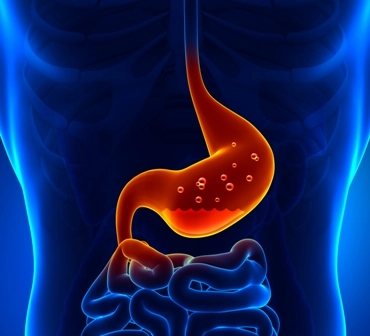
Tip: Dig into dysplastic changes to narrow your code choices.
Barrett’s esophagus is a common condition for patients with GERD (gastroesophageal reflux disease). If your outpatient center includes endoscopy services, equip yourself with specifics on how to report this condition -- such as looking for dysplastic changes -- when ICD-10 codes come into play.
Barrett’s incidence and risks: “There is presently a debate about the association of GERD and the risk of subsequently developing Barrett’s and then the risk of Barrett’s developing into a cancer at the gastroesophageal junction,” says Michael Weinstein, MD, a gastroenterologist at Capital Digestive Care in Washington, D.C., and former representative of the AMA’s CPT® Advisory Panel. Your physician might prefer to undertake screening of chronic heartburn patients to check if they have developed changes seen in Barrett’s esophagus.
Under ICD-9, Barrett’s esophagus is classified under the diseases of the esophagus, stomach and duodenum (530-539). As of now, you will report a diagnosis of Barrett’s esophagus with 530.85 (Barrett’s esophagus) when you are using the current ICD-9 codes. Note that there is a single classification for all forms of Barrett’s esophagus and you use the same code irrespective of the presence or absence of dysplastic changes.
Observe More Specificity Based on Dysplasia
Under ICD-10, 530.85 will transform into K22.7 (Barrett’s esophagus). However, when you begin using ICD-10 codes, you’ll dig deeper into the patient notes prior to assigning a diagnosis of Barrett’s esophagus. This is because ICD-10 codes are more specific in reporting Barrett’s esophagus based on the presence or absence of dysplastic changes. So K22.7 expands into a fourth digit classification based on the presence or absence of dysplastic changes.
In addition, K22.71 expands to a further fifth digit classification based on the grade of dysplastic changes. So if dysplasia is present, you will have to further look through the documentation to see if there is any mention
about the degree of dysplasia that is present to correctly report the diagnosis of Barrett’s esophagus.
Note that the symptoms that you might encounter in the patient documentation will usually be the symptoms that you will see in a patient with GERD. Some symptoms that you will encounter include severe heartburn (R12, Heartburn), difficulty in swallowing (R13.10, Dysphagia, unspecified), throwing up of blood (R11.10 Vomiting, unspecified) and pain below the breastbone (R14.1, Gas pain).
The physician will assess the patient’s symptoms for complications like Barrett’s esophagus.
“If your gastroenterologist believes the patient’s symptoms are consistent with esophageal problems, he will screen the esophagus by performing an endoscopy of the esophagus and the stomach (43235, Upper gastrointestinal endoscopy including esophagus, stomach, and either the duodenum and/or jejunum as appropriate; diagnostic, with or without collection of specimen[s] by brushing or washing [separate procedure]) to check the esophagus for reflux esophagitis and Barrett’s esophagus including any dysplastic changes,” says Weinstein.
The presence of any suggestive changes might make your gastroenterologist suspicious of Barrett’s thus requiring further investigation.
“If during the endoscopy your gastroenterologist sees inflammation, erosions, or irregular salmon colored mucosa, he will perform a biopsy (43239, Upper gastrointestinal endoscopy including esophagus, stomach, and either the duodenum and/or jejunum as appropriate; with biopsy, single or multiple) of the lower esophagus,” says Weinstein. The physician will then send the biopsied specimen to the laboratory for analysis to check for dysplasia and if present to check the grade of dysplasia.
Example 1: The gastroenterologist conducts a screening endoscopy on a patient who has been suffering from recurrent and long-standing GERD to check for Barrett’s esophagus. The physician had previously suggested lifestyle changes along with prescribing H2 receptor blockers to help control the reflux. Since this did not have the desired results, the gastroenterologist put the patient on a one week therapy of proton pump inhibitors and the endoscopy ordered. During the endoscopy at the ASC, the gastroenterologist noted changes in the lower esophagus suggestive of Barrett’s esophagus.
He then performed a biopsy and sent the specimen to the laboratory for analysis. Laboratory findings confirm the diagnosis of Barrett’s esophagus but no dysplastic changes are seen. You report the endoscopy with biopsy with 43239 and the diagnosis with K22.70.
Example 2: A patient previously diagnosed with Barrett’s esophagus (without dysplastic changes) schedules an appointment at the gastroenterologist’s office for a surveillance visit. The physician evaluates the patient’s symptoms and schedules an endoscopy with biopsy of the esophagus. The biopsied specimen is sent to the laboratory to check for dysplasia.
The laboratory results return confirming the presence of low grade dysplastic changes. You report the endoscopy with biopsy using 43239 and the diagnosis that your gastroenterologist notes in the patient documentation with K22.710.
